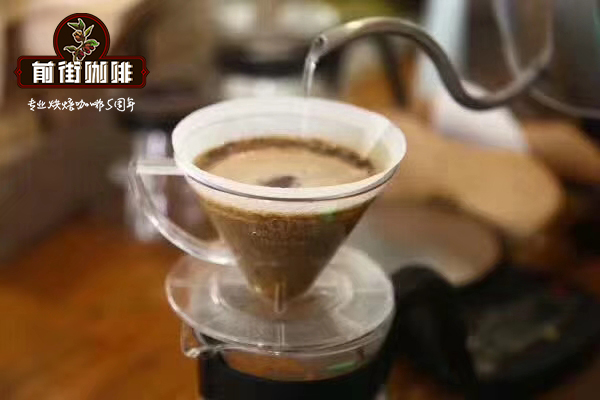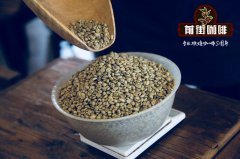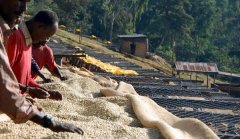What is individual coffee? How to taste a cup of coffee?

Professional coffee knowledge exchange more coffee bean information please follow the coffee workshop (Wechat official account cafe_style)
Speaking of coffee, for many people. Latte, macchiato, cappuccino, these Italian fancy coffee is almost everyone's first understanding of coffee. We don't comment on the pros and cons of Starbucks espresso, but it does enlighten many people's love of coffee.
But today, let's take a look at individual coffee.
What is a single coffee?
When it comes to the most popular drink in cafes today, all kinds of fancy coffee are definitely the main force. With Italian concentration as the bottom, add milk, foam, water, or even wine, juice, chocolate, a variety of combinations, as long as it tastes good, it is a good fancy coffee.
These drinks are delicious and can even be said to promote the popularity of coffee. However, just as some wine lovers like the delicate and elegant Pinot Noir of Burgundy, and some chocolate gluttons like the fruity Malagasy Criollo, coffee can be made from different varieties and can be combined with unlimited flavors under different climate and soil conditions.
This exquisite thing with local characteristics, the flavor of each variety, each country, and even each producing area is different. Although it is difficult to trace the origin of some coffee beans because of many restrictions, this does not prevent gluttons from pursuing the most pure and authentic taste of coffee. As a result, a single variety of single-origin coffee came into being.
There are two understandings of traditional products, the most extensive of which is single variety or single producing area coffee, which is a concept beneficial to growers because the flavor of a producing area can be distinguished from the source. Therefore, at present, it is more common to say that only a single coffee bean from a certain country or a certain producing area is used to make coffee, which we call individual coffee.
Tasting a cup of coffee is like tasting red wine. Each kind of coffee has its own unique allure. So I'm always in a bit of a dilemma when someone says, "recommend your best coffee." Because, everyone's tastes and preferences are different, there is no best drink, only favorite. Each type of coffee has its own fans, and it is impossible to say which is better, even if there is a big difference in price.
The variety of coffee
Coffee as an iconic tropical crop, although there are many varieties, but in the final analysis, there are only three mainstream native tree species. Arabica, Robusta and Liberia.
Among them, Liberia is a native tree species in West Africa, suitable for planting in the lowlands, and the coffee beans produced have a strong aroma and bitter taste. Although the adaptability to growth is very strong, the planting area is very limited, accounting for less than 5% of the world's output, which is rarely seen in daily cafes. So let's focus on understanding
Although Arabica and Roberta are widely cultivated there are significant differences between them. Beans are different and tree species grow differently so their use is not the same. The world's production of Arabica beans is about 70%, while Robosta and others account for 30%.
Robusta has a relatively rough taste, usually with obvious bitterness, low acidity, mellow taste and high caffeine content. The country of origin of this variety, Congo, does not require a high growth environment, rough physique, not easy to get sick, rapid growth, coupled with the general taste, slightly sour and earthy taste, has gradually become synonymous with instant and cheap coffee. Worldwide, Robusta accounts for roughly 30%, 40% of production.
Arabica, a high-quality coffee variety native to Ethiopia, is generally grown in areas with higher elevations and a relatively cool climate (generally speaking, high-quality coffee comes from mountains and plateaus). This is the best quality native coffee variety, widely cultivated all over the world, with many varieties, complex aroma and high acidity. The coffee made by it is usually sour, sweet and bitter, and it will produce infinitely varied complex aromas due to the local conditions of different regions, such as fruit, caramel, chocolate and so on.
At present, almost all high-quality cafes use Arabica coffee beans. Arabica has many varieties and a large number of members, which are mainly divided into:
The three native coffee tree species also give rise to many varieties with different tastes, such as the sweet bourbon, the distinctive Tibica, the fruit-flavored SL28 and SL34, and the blooming, floral rose summer, etc. (most of these varieties belong to the Arabica family). The distinctive characteristics of these coffee varieties, the flavor effects brought by the treatment methods and the characteristics of the producing areas are combined to form a unique style of coffee beans.
Extension | three steps to teach you how to taste a cup of coffee
Although there are many authoritative criteria for measuring the quality of coffee, we have made some simplification on this basis in order to enable beginners to understand coffee more quickly. So to sum up, coffee beginners in tasting a cup of coffee, three steps, how to taste a single cup of coffee?
The first step: smell the incense
Dry aroma: put freshly ground coffee powder close to your mouth and nose, and you will feel the dry aroma of different coffees from different coffee producing areas. For example, in Latin American coffee, you will smell something similar to nuts and dark chocolate, while coffee in Africa has more floral and fruit flavors.
Wet fragrance: pour the coffee into the cup, close your eyes and slowly smell its wet fragrance. You may smell nutty, chocolate, fruity or floral aromas.
Another major misunderstanding of human beings when tasting food is that the tongue cannot actually distinguish the smell, and only when the aroma of the food enters the nasal cavity can you fully perceive the taste of the food.
Inferior quality: industrial flavor, rotten smell, earthy taste, etc.
Quality: the aroma of coffee contains rich aromas such as wine, flowers and fruit, no matter the dry aroma of coffee powder or the wet fragrance after brewing, will bring you a sense of smell to enjoy.
Step two, taste the flavor.
When coffee is in your mouth, you can feel its flavor. In this respect, many enthusiasts, especially those who are just beginning to come into contact with coffee tasting, always think that coffee doesn't smell good. It is true that the sensory discrimination of coffee liquid in the mouth requires a certain amount of exercise, but over time, the flavor can be detected.
Another key point of tasting coffee is how to distinguish between sweet, salty, sour and bitter coffee. Mellowness is what we usually call boby, which refers to the round, mellow and strong taste of the coffee liquid. The difference between a cup of water and a cup of coffee is that water is tasteless and not sticky, while espresso is rich in oil and has a good thickness.
A cup of coffee with a good mellow thickness will make the aroma stay in the mouth longer and the finish longer.
Mellow feeling will not only affect your overall coffee experience, but also affect the integrity of the release of aromatic substances in coffee. Most cup testers or consumers can't tell which tastes are good and which are bad, but at least you know what you like and what you don't like. In my opinion, the judgment of the mellow taste of coffee varies from person to person.
Due to the distribution of taste, sour and salty taste, it is easy to be confused, inferior acid and salty taste is difficult to distinguish. But it is different from the salty taste of salt after all. Of course, some beans have an unusually salty taste, which is very close to the salty taste of sea salt.
The third step is to perceive the aftertaste
The last point of tasting is Huigan. The so-called Huigan refers to the aftertaste of coffee in the mouth and throat. After drinking the coffee, there will always be a taste back from the throat, some of the aftertaste is very long and clear, some are very short and very vague. We say that a longer and clearer aftertaste is good, and the quality of raw coffee beans is higher.
The origin of individual coffee has different flavors, which is the charm that enables the coffee to develop continuously. Coffee from different producing areas has different flavors, making the coffee all over the world a big garden with rich taste.
Important Notice :
前街咖啡 FrontStreet Coffee has moved to new addredd:
FrontStreet Coffee Address: 315,Donghua East Road,GuangZhou
Tel:020 38364473
- Prev

Coffee roasting time and temperature on coffee beans, how to bake non-sour beans?
Professional coffee knowledge exchange more coffee bean information please follow the coffee workshop (Wechat official account cafe_style) coffee taste, that is, the range and quality of sour and bitter taste, aroma intensity and quality, astringent taste, thick strength and some defects in the taste, is the quality of raw beans, roasting is to correctly grasp the possibility of all kinds of raw beans: to what extent can have the best taste
- Next

What are the effects of altitude, temperature and dimension on coffee? How do coffee varieties and altitude reflect each other?
For more information on coffee beans, please pay attention to what kind of coffee varieties should be planted in coffee workshops (official Wechat account cafe_style). This involves complex genetic traits and ecosystems, and has become the hottest field of coffee science in recent years. How does Dr. Dr. Bernard Guyot of the French Center for International Agricultural Development affect coffee on altitude and variety
Related
- Beginners will see the "Coffee pull flower" guide!
- What is the difference between ice blog purified milk and ordinary milk coffee?
- Why is the Philippines the largest producer of crops in Liberia?
- For coffee extraction, should the fine powder be retained?
- How does extracted espresso fill pressed powder? How much strength does it take to press the powder?
- How to make jasmine cold extract coffee? Is the jasmine + latte good?
- Will this little toy really make the coffee taste better? How does Lily Drip affect coffee extraction?
- Will the action of slapping the filter cup also affect coffee extraction?
- What's the difference between powder-to-water ratio and powder-to-liquid ratio?
- What is the Ethiopian local species? What does it have to do with Heirloom native species?

